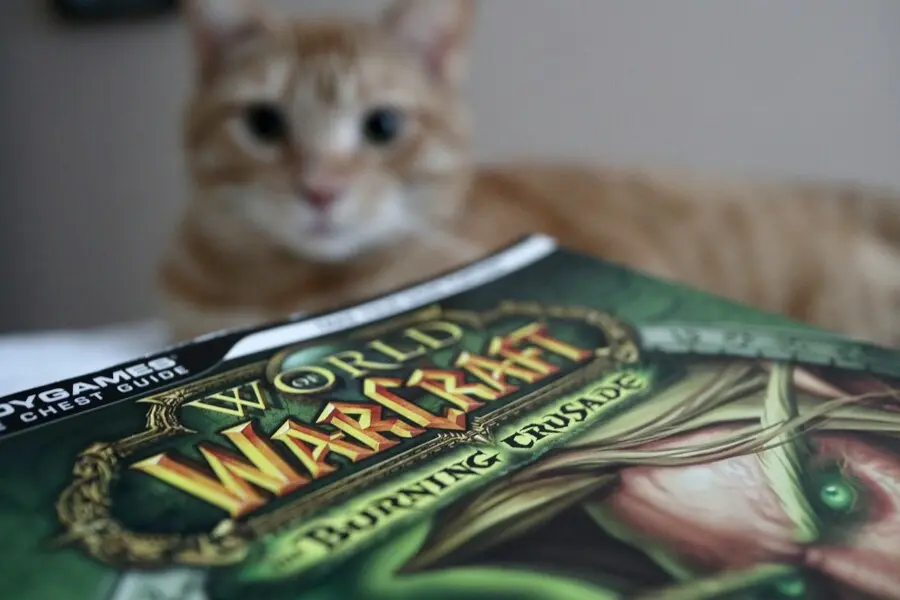ST. NICK
As the story goes, Jolly ol’ Saint Nicholas was a real guy from Myra in the country of Turkey. He was a 4th Century bishop made famous when he heard the story of three Italian maidens whose families had fallen on hard times. Their father couldn’t afford to have all three of them get married, so he was considering selling one of the daughters into slavery to pay for the other two to have weddings. Well, as you can imagine that’s a pretty bad deal for anyone and St. Nick decided to help the family out. One night he snuck up on their roof and secretly tossed three bags of gold down the chimney. With his gift all three daughters were able to get married and his generosity became famous. He became the patron saint of children, orphans, sailors, students, pawnbrokers, thieves and the countries of Russia and Greece.
SANTA’S GOT A BRAND NEW BAG
Over time the legend of St. Nicholas grew and the feast of St. Nicholas celebrated on December 6th, the day he died. St. Nicholas’ eternal retirement as Santa Claus evolved over several centuries as the legend of St. Nicholas was carried over to surrounding countries. Dutch and German settlers brought the basic ideas of what would become Santa Claus to the New World. The Dutch had Sinterklaas and the Germans had Pelsnickel and Christkindl and both celebrated the feast of St. Nicholas. The idea of naughty and nice seems to come from Pelsnickel would bring rewards to the good and punishment to the wicked. The Dutch version of Santa lived in Spain, rode a white horse and traveled with six to eight black men who helped him deliver gifts. Over the centuries, this slowly changed to characters who were far more politically correct. The men became Telatubby-type rainbow colored helpers. This was combined with Scandinavian Yuletide tradition of gifting giving elves and presto, Santa now had a legion of toy building elves to bring joy to the world.
The modern version of Santa Claus quickly took shape with American writers during the holiday season.
In 1808, Washington Irving created the idea of a pipe smoking Santa with a broad-rimmed hat riding over the tree-tops in horse-drawn wagon dropping gifts down chimneys to all his favorite kids.
In 1822, Dr. Clement Clark Moore left the longest lasting impression of the jolly ol’ man with his story, “A Visit from St. Nicholas”, better known as “The Night Before Christmas”. He established that Santa lived in the Artic with a flying sleigh pulled by eight reindeer. He described Santa as having ‘a broad face, and a little round belly, that shook when he laughed like a bowl full of jelly.”
Thomas Nast illustrated covers for Harper’s Weekly in the late 1800’s and by request of President Lincoln was commissioned to create a special Christmas picture for the cover. This started an annual tradition for Nast who used the opportunity to mould Santa to his liking. Nast created the standard Santa suit, his home at the North Pole and the image of him pouring over a list of naughty or nice.
By the 1850, Nast’s new version of Santa began appearing in American department stores. Santa’s image evolved with each new holiday season. The modern image of Santa was firmly solidified by artist Haddon Sundblom in 1931, when he created an annual Santa campaign for Coca-Cola.
RUDOLPH
In 1939, Robert May, an advertising writer for the Montgomery Ward department store created the marketing idea of Rudolph the Red-nosed Reindeer. Montgomery Ward distributed 2.4 million copies of the story booklet in its first year of release. May had suffered considerable financial strife, his wife had died of a terminal illness and in 1947 the department store signed over the copyright of Rudolph to him. May’s brother-in-law soon after wrote the lyrics for the song, ‘Rudolph the Red-Nosed Reindeer’. Gene Autry was the first to record the song in 1949 and it went on to becoming the second best selling song of all time, second only to ‘White Christmas’. The famous Rudolph Christmas special was created in 1964 and remains a classic to this day.
WE THREE KINGS
Gold, frankincense and myrrh – precious metal and gum resins, that’s what the three wise men brought to the baby Jesus on his birthday. These were rare and special gifts, things you wouldn’t normally be able to get your hands on, especially if you were an infant even if you’re dad was the creator of the known universe. Everybody knows what gold is and I’m guessing the guy who brought it was the town favorite, so what about frankincense and myrrh? Frankincense is hardened tree sap from the Boswelia tree. Myrrh is also hardened tree sap from the Miphora tree family. They both are used as incense and commonly found in the country of Somalia.
An interesting note, nothing in the Bible states how many wise men showed up bearing gifts. Gaspar, Melchior and Balthasar are commonly referred to has the names of the wise men, but these names don’t appear in the Bible either. The number three is reference to the three types of gifts presented. Also there is no mention of the wise men riding camels or being kings. There is further evidence that the men showed up sometime after the actual birth as the source info in Matthew 2:11 states, “And when they were come into the house, they say the young child with Mary his mother, and fell down, and worshipped himâEUR¦” Hmmm, it seems by this time Mary had a home and Jesus a young kid, instead of an infant in a stable.
STOCKING STUFFERS
The original idea for stocking stuffing came from kids leaving carrots and turnips in their shoes for Santa’s horse or donkey, long before he was known to have reindeer. Santa would gratefully take the snacks for his stead and replace them with treats for the giving children.
CANDIED CANE
The red and white striped holiday pacifier has been around for several centuries. Parents have long been giving their children white sugar sticks to keep their yaps shut, then in the 1670’s an industrious German choirmaster bent the sticks to resemble shepherd staff. With their somewhat holy interpretation, as Jesus was the Good Shepherd, and convenient hook shape for hanging on tree branches, the candy became a favorite Christmas tree decoration. When turned upside down, the hook is big “J”, a fitting symbol for Big J.
Over time, the candy adopted its peppermint flavor and familiar stripes. Peppermint is similar to hyssop, which was used for ancient purification and sacrifice rituals. The traditional candy cane has three small red stripes and one large one. The most common interpretation states the three small ones represent the Holy Trinity and the larger one reminds us of God. Another versions states that the three small stripes represent our own sins while the larger symbolizes Christ’s Passion. Green is the color of giving and a green stripe is sometimes added to represents Jesus is God’s gift to us.
KISSY FACE
By definition, mistletoe is an aerial evergreen parasitic plant that has no roots of its own and lives off the tree it attaches itself to. Doesn’t sound so romantic does it?
Well, centuries ago, Druids respected mistletoe as a sacred plant with spiritual and medicinal healing qualities. Much fanfare went into collecting the plant and they used a special gold dagger to harvest it. A Norse myth tells the story of a Balder, the god of light, who was shot down by an arrow crafted from a branch of mistletoe. Earth and heaven wept for his death and for three days each element tried in vain to bring Balder back to life. It was his mother, Frigga who restored but not before her fallen tears were transformed into the white berries of the mistletoe. From then on she decreed that no harm would fall to anyone under the mistletoe and they shall receive only a kiss of love.
O’ CHRISTMAS TREE
In the 4th Century AD, the Roman Church decided Christmas should officially be celebrated on December 25th. By doing this some of the pagan customs of the Roman Saturnalia were absorbed as it was celebrated at that sa
me time of year. During Saturnalia people feasted, exchanged gifts and decorated their homes with lamps and evergreen shrubs. The food and presents were fine with the Church, but the evergreen stuff was just too pagan for them at it was forbidden. For centuries the battle over festive home decoration ensued. In the 16th Century John Calvin forbade the observance of Christmas and Easter and in 1659 it was against the law in Massachusetts to celebrate Christmas anywhere else but in church. It wasn’t fully embraced until the mid-nineteenth century by England’s Prince Albert allowing for Christmas and the home decoration of Christmas trees to be fully accepted.
Today it is customary for nearly everyone to have a Christmas tree in their homes, regardless of strong religious affiliations. 2004 marks the 72nd Annual lighting of the Rockefeller Christmas Tree.
ROCKEFELLER CENTER
The annual Christmas tree at Rockefeller Center is usually a Norway Spruce. They usually have a life span of 80 to 110 years and grow about a foot a year. The desired dimensions are a minimum of 65 feet tall and 35 feet wide. 75 to 100 feet tall are preferred. The trees are located in the Northeastern part of the United States. It takes all of two minutes to cut it down by requires 20 people and a 280-ton all-terrain hydraulic crane to handle the tree. Once in place it is transported via a custom built telescoping flatbed truck to New York City.
CHRISTMAS LIGHTS
After centuries of repression, Christmas became a legal holiday in 1859 in the state of Massachusetts. Soon the rest of the United States followed and in 1882 Thomas Edison struck upon the idea of electric Christmas lights. By 1912, outdoor Christmas tree lights had become common in Boston. After the first World War, the lights caught on Europe and by the mid-20th Century they had become widespread and a well-established part of the holiday cheer. These days it is the inciting moment that marks the holiday season with the sight of the first Christmas lights of the year.
CELEBRITY CHRISTMAS
Here’s the scene, a reenactment of the nativity starring Samuel L. Jackson, Hugh Grant and Graham Norton as shepherds, David and Victoria Beckham as Joseph and Mary, British Prime Minister Tony Blair, The Duke of Edinburgh and President George W. Bush as the Three Wise Men, Kyle Minogue as the Angel and J.C. playing himself as an infant. It’s not a movie, but this year’s Madame Tussaud’s Celebrity Nativity scene now on display in London. We’ll leave it to you to find what’s wrong with that picture.
Source by Chad Koch












